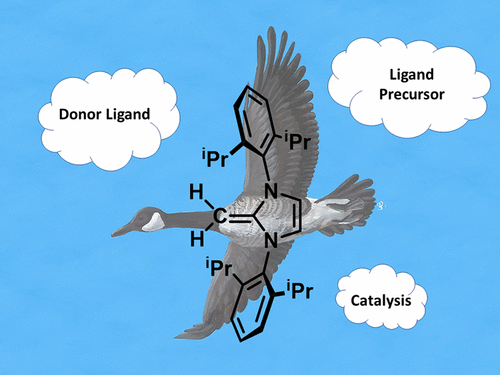当前位置:
X-MOL 学术
›
Acc. Chem. Res.
›
论文详情
Our official English website, www.x-mol.net, welcomes your
feedback! (Note: you will need to create a separate account there.)
Pushing Chemical Boundaries with N-Heterocyclic Olefins (NHOs): From Catalysis to Main Group Element Chemistry
Accounts of Chemical Research ( IF 16.4 ) Pub Date : 2017-08-04 00:00:00 , DOI: 10.1021/acs.accounts.7b00264 Matthew M. D. Roy 1 , Eric Rivard 1
Accounts of Chemical Research ( IF 16.4 ) Pub Date : 2017-08-04 00:00:00 , DOI: 10.1021/acs.accounts.7b00264 Matthew M. D. Roy 1 , Eric Rivard 1
Affiliation

|
N-Heterocyclic olefins (NHOs) have gone from the topic of a few scattered (but important) reports in the early 1990s to very recently being a ligand/reagent of choice in the far-reaching research fields of organocatalysis, olefin and heterocycle polymerization, and low oxidation state main group element chemistry. NHOs are formally derived by appending an alkylidene (CR2) unit onto an N-heterocyclic carbene (NHC), and their pronounced ylidic character leads to high nucleophilicity and soft Lewis basic character at the ligating carbon atom. These olefinic donors can also be structurally derived from imidazole, triazole, and thiazole-based heterocyclic carbenes and, as a result, have highly tunable electronic and steric properties.
中文翻译:

用N-杂环烯烃(NHOs)推动化学边界:从催化到主族元素化学
N杂环烯烃(NHOs)从1990年代初期的一些零散(但很重要)的报告的话题,发展到了最近在有机催化,烯烃和杂环聚合等广泛研究领域中选择的配体/试剂,和低氧化态主族元素化学。NHO是通过将亚烷基(CR 2)单元附加到N杂环卡宾(NHC)上而正式获得的,其明显的分子特征导致在连接碳原子上具有高亲核性和柔软的Lewis碱性。这些烯烃供体还可以在结构上衍生自咪唑,三唑和噻唑基杂环碳烯,因此具有高度可调的电子和位阻特性。
更新日期:2017-08-04
中文翻译:

用N-杂环烯烃(NHOs)推动化学边界:从催化到主族元素化学
N杂环烯烃(NHOs)从1990年代初期的一些零散(但很重要)的报告的话题,发展到了最近在有机催化,烯烃和杂环聚合等广泛研究领域中选择的配体/试剂,和低氧化态主族元素化学。NHO是通过将亚烷基(CR 2)单元附加到N杂环卡宾(NHC)上而正式获得的,其明显的分子特征导致在连接碳原子上具有高亲核性和柔软的Lewis碱性。这些烯烃供体还可以在结构上衍生自咪唑,三唑和噻唑基杂环碳烯,因此具有高度可调的电子和位阻特性。









































 京公网安备 11010802027423号
京公网安备 11010802027423号